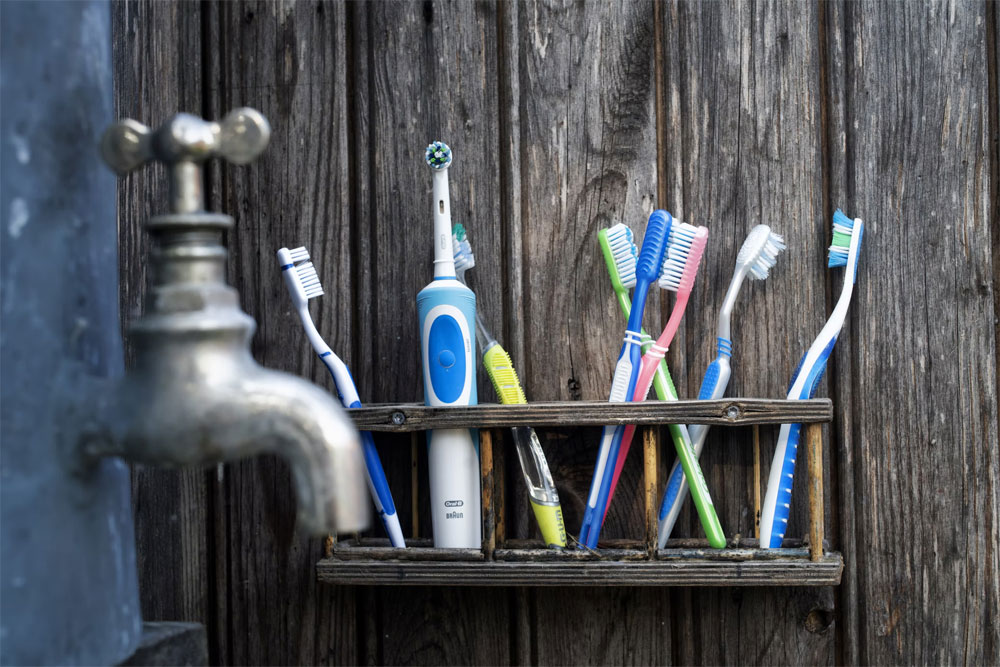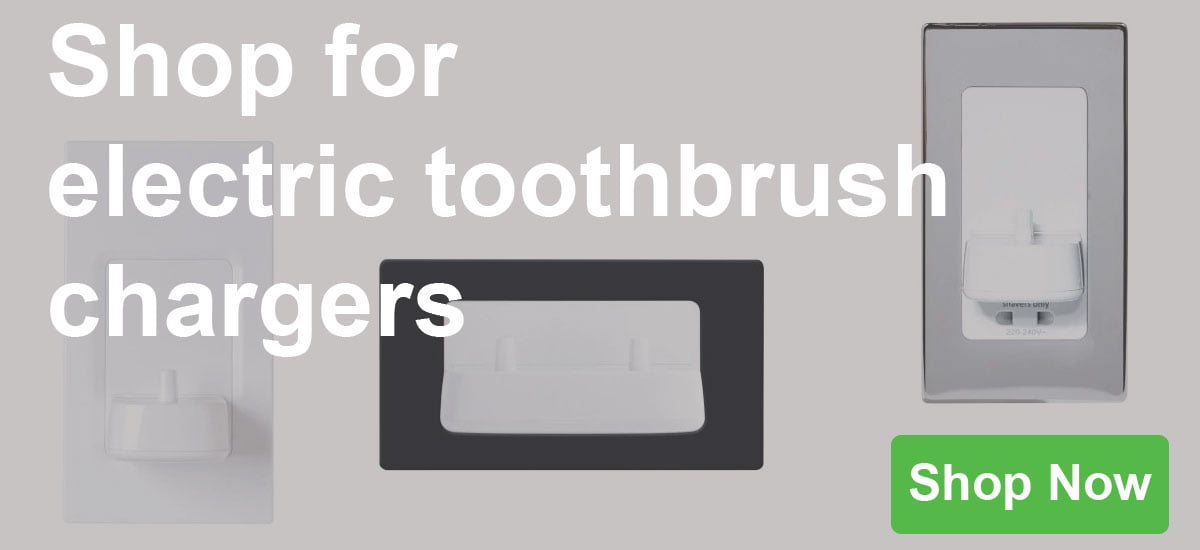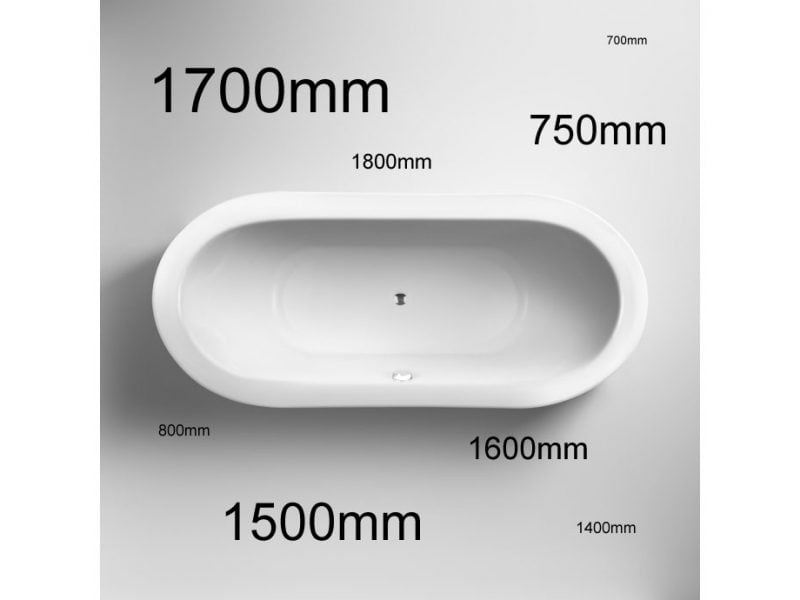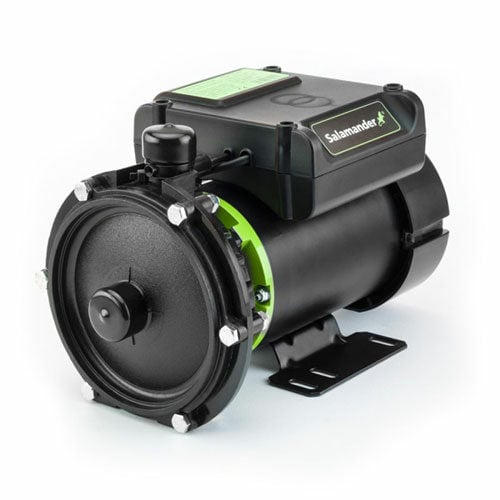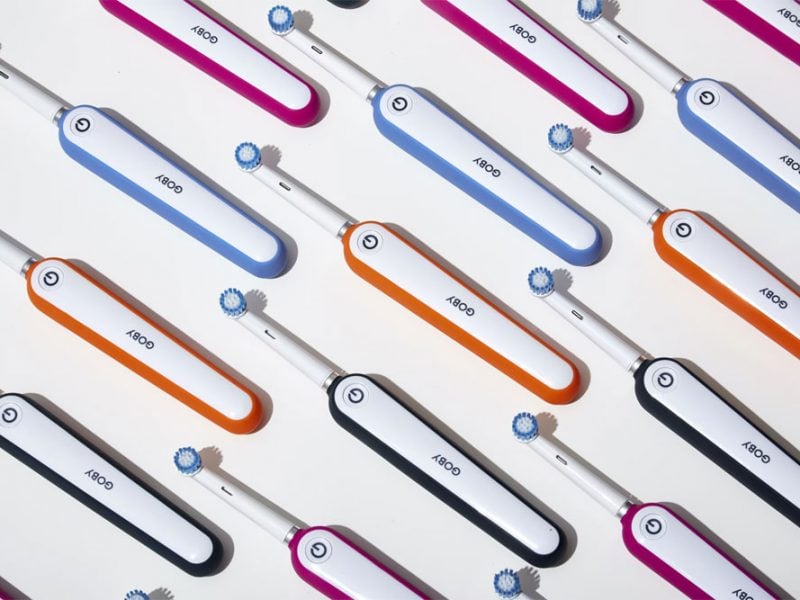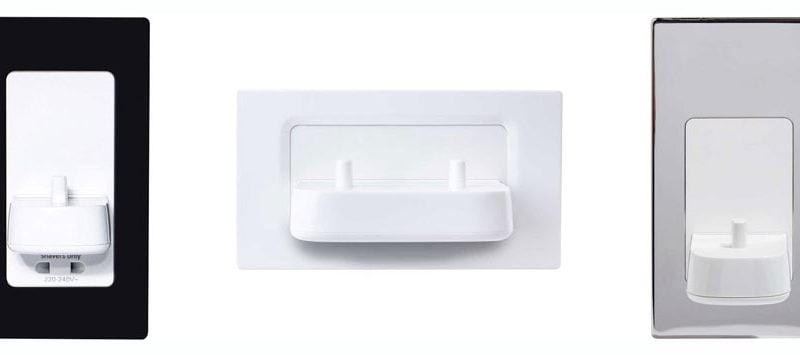How to brush your teeth with an electric toothbrush
Think of what you put in your mouth every day. You consume all kinds of different food and drink, which can cause a build-up of plaque on your teeth. Therefore, you must be brushing your teeth twice a day for two minutes to maintain good oral health.
Gather your tools
First and foremost, you need to get your tooth-brushing tools together. The tools that you use will make all the difference in your overall tooth-brushing experience. You will need an electric toothbrush, electric toothbrush holder, fluoride toothpaste, and floss.
An electric toothbrush
Electric toothbrushes are great for easily removing plaque, freshening your mouth and keeping you safe from gum disease. They can get to the hard-to-reach places that a manual toothbrush cannot. An electric toothbrush is an essential tool for the optimum brushing experience.
Toothpaste
There is a huge variety of different types of toothpaste to suit individual needs. Some specialise in whitening teeth whereas others specialise in protecting you from gum issues. Select your toothpaste based on what suits your own personal dental needs best. All fluoride toothpaste helps protect your teeth against decay.
Floss
Flossing, a step that is often overlooked is critical in maintaining good oral hygiene. Flossing minimises the risk of a build-up of plaque and reduces the risk of gum disease. It is a small step that does not take long and is worthwhile adding to your brushing routine to have the best possible oral health.
How often should you brush?
You should brush your teeth twice a day and for two minutes. It is best to do so in the morning before breakfast and then before you go to bed in the evening.
You need to ensure that you brush at least twice a day to prevent a build-up of plaque on your teeth and minimise the risk of developing tooth decay. Brushing twice daily also promotes healthy gums and protects them from gum disease.
Brushing in both the morning and evening ensures that you are starting and ending the day with clean teeth and gums and you are regularly. brushing away any unhealthy bacteria.
How to brush your teeth properly: step by step guide
Once you have got all your equipment together, you’re ready to start brushing your teeth. Below is a brushing technique to make sure that you are brushing your teeth properly:
- First of all, wet your toothbrush.
- Next, put a pea-sized amount of toothpaste on your toothbrush.
- Put the brush head in your mouth at a 45-degree angle, then turn the electric toothbrush on.
- Imagine your mouth in four sections – top left, top right, bottom left, and bottom right. You want to spend 30 seconds on each section. Start with any section and work your way around your mouth.
- Spend a couple of seconds holding the brush head against each tooth and ensure that both the tooth and the gum line are covered. Make sure that you get the inside of each tooth, too.
- After you have brushed your teeth, move on to your tongue. Gently brush your tongue from front to back to keep your whole mouth fresh.
- Finally, spit any excess toothpaste in your mouth into the sink.
- Floss or use interdental brushes afterwards to get any leftover food out from between your teeth.
Make sure to brush your teeth in front of a mirror to clearly see what you are doing and ensure you don’t miss any important areas. You can also use disclosing tablets. Simply put one of these tablets into your mouth and chew it. The tablets release a dye that will stick to the plaque on your teeth so that you know where you need to focus your brushing.
Electric toothbrush buyer’s guide
There is a huge range of different styles of electric toothbrushes to choose from depending on what your oral hygiene needs are. Some decisions to factor in when buying your electric toothbrush can be the type of toothbrush, battery life, price range, and any special features that might come with the toothbrush.
Toothbrush type:
Rotating
Rotating toothbrushes are great for getting plaque off of your teeth. Most rotating electric toothbrushes come with a round brush head, making them the perfect shape to fit on and around your teeth.
Rotating toothbrushes are great for getting into the hard-to-reach gaps between your teeth and help protect your gum line.
Oscillating
Similar to the rotating toothbrush, oscillating toothbrushes are great for clearing build-ups of plaque on your teeth due to the back and forth motion that they make. The powerful but gentle mechanism keeps your teeth clean and fresh from any tartar.
Pulsating
A pulsating toothbrush is arguably the best type of toothbrush for breaking up plaque on your teeth. The pulsating motion breaks down the plaque, which continues to be brushed away from your teeth.
Dual-head
Dual-headed toothbrushes are great as they combine a pulsating toothbrush with a side to side toothbrush. This ensures that your teeth are getting a thorough brushing, and guarantees that the hard-to-reach places are getting the TLC that they need.
Ultrasonic
Ultrasonic toothbrushes use ultrasound frequencies to help clean your teeth. These frequencies are ideal for breaking up plaque. They also need very little physical movement on your part. All you need to do is move the brush around your mouth, with very little actual brushing technique required.
Side to side
Side-to-side toothbrushes are wonderful for keeping teeth clean and white. The side to side motion gets rid of any leftover food particles from between your mouth, while simultaneously brushing them away from your teeth.
Battery Life
Depending on the style and brand of the electric toothbrush that you have, the battery life will vary. The battery of most electric toothbrushes ranges between 3 to 14 days. Most toothbrushes should be charged for around 12 hours to get the most out of your battery life.
Price
Again, the prices of electric toothbrushes can vary quite a bit. Some of the cheapest electric toothbrushes on the market start at around £20, whereas some of the most expensive can have you spending upwards of £500. The pricier the toothbrush, the more special features it tends to have.
However, you do not necessarily need all the bells and whistles to brush your teeth properly. Regardless of what you are looking for, you are sure to find a style of electric toothbrush that suits your personal oral hygiene needs.
Extra features
Certain electric toothbrushes come with extra features that are built in to help enhance your tooth-brushing experience. Toothbrushes with these features tend to be pricier, however, they are definitely bonuses to consider when you are choosing the electric toothbrush that is right for you.
Timer
Some electric toothbrushes come with built-in timers that help to make sure that you are giving each quadrant of your mouth adequate brushing time. The timer will go off every 30 seconds to alert you to move the brush head to the next section of your mouth. This breaks up the two minutes for you and guarantees that you are brushing your teeth evenly.
Pressure warning
Certain electric toothbrushes have pressure warning sensors built into them. Depending on the make of the toothbrush, these sensors will either flash or make a noise if you are brushing your teeth a bit too hard. Brushing your teeth using too much pressure can be harmful to your gum line and the enamel on your teeth so pressure sensors can be really helpful to ensure that you brush your teeth properly.
Popular electric toothbrush brands
There are a variety of brands that sell electric toothbrushes for you to choose from. Depending on what your goal for your teeth is, you are sure to find a brand and style that suits you.
Oral-B
Oral-B is one of the top worldwide leading oral care companies. They have a variety of ranges of electric toothbrushes for their customers to choose from – the iO series, the Genius series, the Smart series, the Pro series, and the Vitality series.
The iO is their newest range which uses A.I. technology to help you achieve better brushing habits as it tracks your movements whilst you brush your teeth. It comes with an interactive display to help with timing your brushing and shows your battery level so that you know when to charge your toothbrush with plenty of warning in advance.
The Genius series is very focused on gum health. The pressure sensor and rotating brush head make this toothbrush one of the best in the business for keeping tartar and gum diseases at bay.
The Smart series toothbrushes connect to the Oral-B app that you can download to your phone. On the app, you receive feedback on your brushing technique and tips on brushing your teeth properly.
The Pro series provides models that are cheaper than those previously listed, however, they are still great for keeping your teeth fresh and clean. The Pro series toothbrushes come with oscillating heads and built-in timers to ensure you are giving your teeth and gums the best possible brushing experience.
The Vitality series is Oral-B’s most budget-friendly series, retailing at just £20. It comes with a built-in timer and is an ideal electric toothbrush, to begin with, if you have never used one before. Simple, but effective.
Philips
Philips are another leading brand that provides top-quality electric toothbrushes. They have a huge range of different toothbrushes in their Sonicare line. Their toothbrushes are mainly pricier than those from Oral-B and Colgate, however, they are extremely advanced.
Each toothbrush has a battery life of up to two weeks. Most of the toothbrushes come with a variety of modes and intensities, so your tooth-brushing routine does not have to be the same every day. Instead, you can cater to what feels best for your oral needs with the different settings.
Their toothbrushes also come with pressure sensors and timers to ensure you have the best brushing experience possible.
Colgate
Colgate is an American oral care brand that is renowned worldwide for its top-quality products. At the moment, Colgate only has one style of electric toothbrush, the Smart Electric Toothbrush. This is a sonic style toothbrush.
It can be linked to Apple and Android devices that have the Colgate app so you can track how well you are brushing your teeth. The brush heads are replaceable, so this toothbrush will last you for years.
How to choose the right toothpaste
Choosing the right toothpaste for your teeth is another important part of the process. You should pick your toothpaste based on what you are seeking to achieve with your oral care.
Different brands of fluoride toothpaste come with various types of toothpaste catered to all kinds of needs for your teeth. You can buy fluoride toothpaste that caters to sensitive teeth, while other types of toothpaste can help to strengthen teeth, to whiten teeth, and to achieve many other oral goals that you may have.
Strengthening kinds of toothpaste are great for keeping your teeth healthy. They work by hardening your enamel and in turn making it stronger and protecting you from cavities and decay.
Kinds of toothpaste for sensitive teeth work by desensitising nerve endings to prevent toothache and tooth sensitivity. These kinds of toothpaste are ideal for people who regularly suffer from pain and/or sensitivity when brushing or eating.
Whitening toothpaste says what it does on the tin. The whitening works by removing any stains from the surface of your teeth. This kind of toothpaste is particularly popular amongst caffeine lovers and smokers as coffee and cigarettes are two of the worst offenders when it comes to staining your teeth.
Any toothpaste that you choose to use will work with any type of toothbrush – there is no type that is better than others. Just pick the toothpaste that suits your oral needs best.
Can you brush your teeth properly with a manual toothbrush?
A manual toothbrush is still fine for brushing your teeth effectively. While manual toothbrushes may not be able to get into the harder to reach crevices in between your teeth, you can still brush your teeth properly.
With a manual toothbrush, you have to have a more physical brushing routine than you do with an electric toothbrush as you do not have an electric brush head that will do the work for you.
The process is still pretty similar, however. The steps are as follows:
- Wet your toothbrush.
- Put a pea-sized amount of toothpaste on the head of your toothbrush:
- Put the brush head against your teeth at a 45-degree angle, then begin to brush the outside of your teeth gently in small and circular strokes. Work your way methodically around each tooth, making sure to be brushing both your teeth and gums.
- Flip the brush over so that you can brush the inside of your teeth. Again, continue to brush in small, circular strokes.
- After you have finished brush your teeth, it is time to brush your tongue. Start with the brush head at the back of your tongue, and brush forward in a sweeping motion to clear any leftover food particles that are still in your mouth.
- Finally, spit any excess toothpaste into the sink.
- Floss and/or use interdental brushes after brushing to ensure you have got all the food out from any gaps.
Whether you are using an electric toothbrush or a manual toothbrush, you still must brush twice a day for two minutes. Consistency is key in ensuring you have the best oral health possible.
FAQs
How do you brush your teeth with an electric toothbrush?
As previously highlighted, brushing your teeth with an electric toothbrush is simple. The instructions on how to brush your teeth using an electric toothbrush are as follows down below:
- Wet your toothbrush.
- Add a pea-sized amount of toothpaste to your toothbrush bristles.
- At a 45-degree angle put the brush head against your teeth.
- Turn your electric toothbrush on.
- As highlighted earlier, you want to imagine your mouth in four quadrants – top left, top right, bottom left, and bottom right. You want to spend 30 seconds on each section. Start with any section and work your way around your mouth.
- Spend a couple of seconds holding the brush head against each tooth and ensure that both the tooth and the gum line are covered. Make sure that you get the inside of your teeth as well.
- After you have brushed your teeth, move on to your tongue. Gently brush your tongue from the front to the back to get rid of any leftover bacteria.
- Spit the leftover toothpaste out into the sink.
- Floss or use interdental brushes afterwards to get any leftover food particles out from between your teeth.
Brushing with an electric toothbrush takes a lot less physical manoeuvring on your part as the electric brush head does the majority of the work for you.
Are you supposed to brush with an electric toothbrush?
With an electric toothbrush, you do need to do as much manual work to brush effectively. Instead, the electric brush head does a lot of the work that you would have to do with a manual toothbrush.
With an electric toothbrush, it is much easier to get into the hard-to-reach gaps in between your teeth that you would have to work a lot harder to get to with a manual toothbrush.
Therefore, you do not need to use a brushing motion whilst cleaning your teeth with an electric toothbrush. Instead, methodically move the brush around your mouth and ensure that you are spending an adequate amount of time holding the brush at a 45-degree angle against each tooth.
Are electric toothbrushes bad for your teeth?
Electric toothbrushes are not bad for your teeth. However, you can still brush your teeth in a damaging way. If you brush too hard or too vigorously, it can be bad for both your teeth and gums. Although, this can happen with both an electric or manual toothbrush.
However, as previously noted, many electric toothbrushes come with sensors that alert you if you are applying too much pressure whilst you are brushing your teeth. Therefore, using an electric toothbrush with one of these sensors can actually be better for your oral health as they alert you when you are doing something that could be potentially damaging.
As well as this, you can buy an electric toothbrush with a built-in timer to ensure that you are brushing your teeth for an adequate amount of time. Additionally, the brush head on an electric toothbrush can get into the most difficult to reach crevices in your mouth that a manual toothbrush cannot.
Therefore, it can be argued that using an electric toothbrush is actually much better for your oral health as opposed to using a manual toothbrush.
What is the best toothpaste to use with an electric toothbrush?
You can use any fluoride toothpaste with an electric toothbrush. Whatever type of goal you have for your oral health, you can find a toothpaste to help you get there along with your electric toothbrush. Toothpaste is really down to personal preference – there are no kinds of toothpaste that we actively would not recommend using with your electric toothbrush.
Regardless of whether you choose to use whitening toothpaste, strengthening toothpaste, or toothpaste for sensitive teeth, it will be compatible with whatever toothbrush you have.


